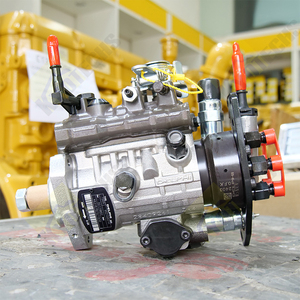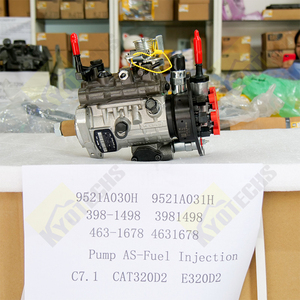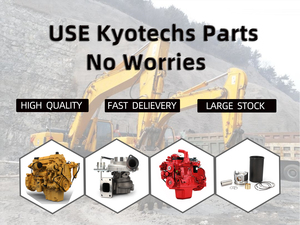
All categories
Featured selections
Trade Assurance
Buyer Central
Help Center
Get the app
Become a supplier

(1553 products available)























Electrical jockey pumps, unlike traditional pumps, are small booster pumps that help maintain water pressure in fire protection systems. They come in various types based on operational principles and applications. Below are the common types:
Centrifugal jockey pumps are the most common types circulating water in fire protection systems. They use an impeller, which is a revolving machine part that sucks in fluid and then flings it out by a centrifugal force for motion. These pumps efficiently provide a smooth and continuous water supply through a simple yet effective rotational mechanism harnessing electric motors for the impeller's rotation.
These pumps, unlike the centrifugal pumps mentioned above, work principle-wise by trapping a fixed amount of water and displacing it within the pump chamber to provide pressure. They are ideal in low-flow situations with more accuracy in pressure delivery. Rotary and reciprocating PD pumps are the two main categories that consist of positive displacement jockey pumps often used for specific applications.
While hydraulic jockey pumps use water as a pressure medium, the electric ones use electricity. These pumps make an excellent choice for areas where the electricity supply system is reliable. They are preferable due note sources of power such as generators that may not be reliable. Their maintenance is low; hence, they are widely used within various industries.
This type of jockey pump has a vertical orientation. It is mainly used in areas with space constraints and is an ideal solution in high-rise buildings. The vertical orientation facilitates a more space-efficient design without compromising the functionality of the pump's pressure-maintaining function.
Just like vertical jockey pumps, horizontal jockey pumps are oriented horizontally. Unlike the vertical type, these pumps are more easily accessible when maintenance is concerned, especially in large spaces. The horizontal variant is often used in big industrial areas because, in these industrial areas, water pressure consistency is important.
A mechanical seal is important in preventing leakage by forming a seal at the pump's outlet and inlet. Mechanical seals over the years have been made of carbon, ceramic, and graphite for its resilience and low friction properties. The seal material should be compatible with the water and other liquids being transported.
A maintenance kit contains all the spare parts required for the routine servicing of electrical jockey pumps. Items such as gaskets, O-rings, bearings, etc., are included in a maintenance kit. Having a maintenance kit on hand helps in reducing downtime by allowing quick repairs when the need arises.
A pressure switch is an electromechanical device. The device turns the pump on and off by closing and opening its internal electrical contacts based on the pressure in the system. The pressure is determined by the pre-defined range set on the switch. The pressure switch adjustment needs to be done from time to time to accommodate changing flow requirements.
The frame of an electrical jockey pump provides the necessary structural support for the entire assembly components. Material such as steel or aluminum, which is lightweight but strong enough, is often used to manufacture the pump frame. A good frame should be robust, corrosion-resistant, and durable. It also helps with vibrational dampening to ensure smooth operation.
Bearings reduce friction and allow moving parts to glide smoothly. Ball bearings and roller bearings are the common types of bearings used in pumps. The choice of the pump bearing material, such as bronze, ceramic, or steel, depends on the temperature, load, humidity, and other factors. Bearings should be constantly lubricated and replaced when need be to prevent pump failure and overheating.
Choosing the correct electrical jockey pump comes down to several technical and practical considerations, many of which relate to the specific requirements of the buyer's business. A discharged reference guide is below:
A proper understanding of the water pressure that needs to be maintained is key to choosing the right jockey pump. The pump's pressure output should always be in line with the system's required pressure to ensure proper pressure maintenance. Pressure switches that are adjustable can aid one in accommodating different pressure as per the requirements.
This is a widely used area. Longevity should be looked for when buying jockey pumps since their application is in fire safety systems. Check the brand reputation, material quality, and design to assess potential longevity. Pumps with previously known trouble-free service require fewer repairs and replacements in the long run.
The type of electrical jockey pump refers to centrifugal or positive displacement pumps that have different operational methodologies. Centrifugal pumps are ideal where smooth fluid flow is needed, while the positive displacement jockeys are better suited for applications requiring precise low-flow measurement. One should choose the right pump type based on the operational needs and requirements.
Electrical jockey pumps have to be powered by a reliable source of electrical flow. It will also be important to determine whether the pump is to be used in a location with consistent electrical mains availability or in a place where generators will be the main source of power. There are more reliable and efficient pumps when the mains electricity is used as their primary driving source.
It is important to consider temperature, humidity, and the fluid's nature which may affect pump performance. For instance, the appropriate materials and seals must be selected if the water being handled is corrosive and highly aggressive. Specific types of pumps are designed for extreme temperature operating environments.
Following are some simple steps to use the jockey water pumps:
The initial checks of using electrical jockey pumps include water, fluid, or anything at all in the system's examination. All connections need to be well tightened, and power cables checked for damage. Check if the mechanical seal and bearings have been lubricated. Any small efforts make large differences when it comes to the initial check.
The control panel has to be accessed so the electrical components can be configured. The pressure switch settings have to be adjusted to the system's required pressure range. Digital panels enable easy settings modification, while analog panels require previous settings memorization. The control panel may also monitor other parameters, such as water levels and operations.
Priming a pump means filling it with water before its running to avoid dry running and damage. The water has to be filled in the pump casing and any air that is trapped has to be eliminated. The priming was done on centrifugal pumps, especially the ones with the priming port. Check and consult the manufacturer's guidelines for the implementation of an electrical jockey pump.
Once the initial checks are done, and the control panel is set, the pump has to be started either from the manual or the auto mode, and the start button has to be pressed. The stability of the pressure has to be monitored when the electrical jockey pump is given a soft and low power start. Before the final start-up, the pressure fluctuations have to be reduced.
After the Electrical Jockey Pump starts, close monitoring of its operation is a good practice. Parameters like pressure, flow rate, and temperature must be constantly checked. Automated monitoring systems can assist in real-time data tracking and alerts. System Performance Check-In routinely checks for unusual vibrations, sounds, or leaks to catch potential issues early.
A1: The pressure switch turns the pump on to maintain pressure and off when the desired pressure is reached to avoid overworking the jockey pump.
A2: Yes, a mechanical seal is important. It controls the pump's internal liquid and prevents the liquid from leaking outside the pump, reducing wastage and making operations easier.
A3: Yes, the attention of the bearing in electrical pumps calls for special attention. Lubrication is a requirement for the avoidance of wear and tear and pump failure.
A4: A high-performance mechanical seal is made of graphite, carbon, and ceramic. The materials are resistant to corrosion and guarantee durability.
A5: A centrifugal pump is suitable for constant flow, and electric jockey pumps are commonly used in fire protection systems because they can run for long hours steadily.